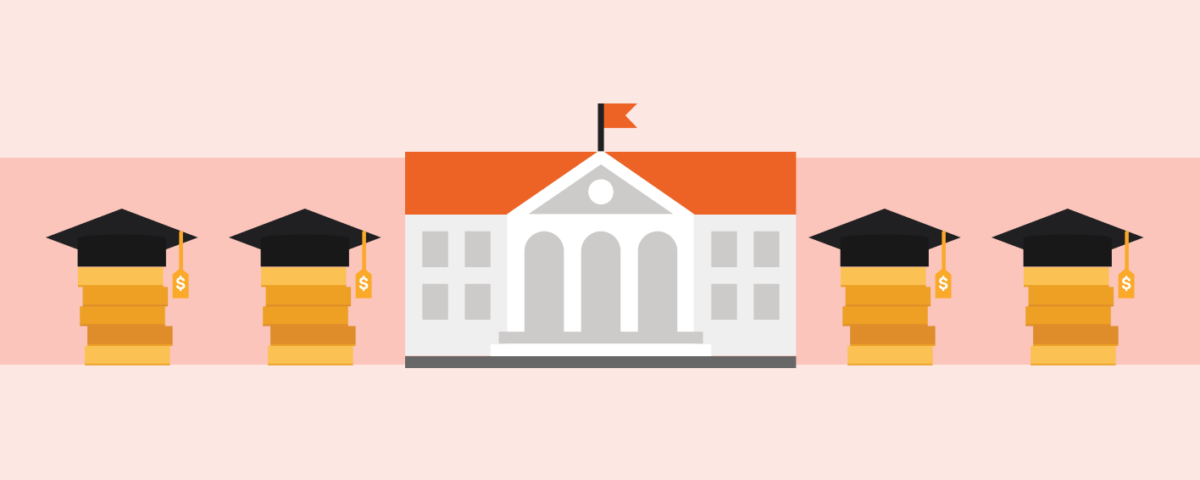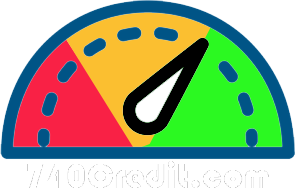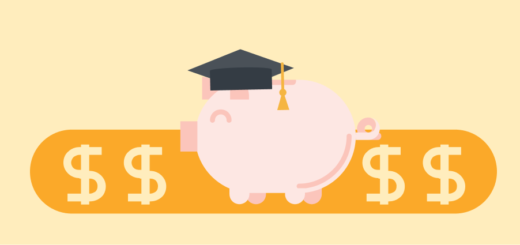How to Go Back to School With Student Loans in Default
Our goal is to give you the tools and confidence you need to improve your finances. Although we receive compensation from our partner lenders, whom we will always identify, all opinions are our own. Credible Operations, Inc. NMLS # 1681276, is referred to here as “Credible.”
If you miss a payment on a student loan, your loan will be considered delinquent. After missing payments for a certain period of time — 270 days for most federal student loans and 120 days for most private student loans — your loan will enter default.
Not only can defaulting damage your credit, but it could also result in losing access to financial aid that you need to afford additional classes. The good news is that there are a few options that could help you get out of default and regain eligibility for financial aid.
If you’re wondering how to go back to school with defaulted student loans, here’s what you should know:
What are my options if I want to go back to school with defaulted student loans?
If you have student loans in default, it could be difficult to go back to school — especially if you’ve defaulted on federal loans, as this could make you ineligible for any more federal aid.
But if you can get your loans out of default, you could regain access to financial aid as well as other federal benefits, such as income-driven repayment (IDR) plans and student loan forgiveness programs.
Here are a few potential ways to get your student loans out of default:
1. Rehabilitate your defaulted student loans
Student loan rehabilitation is one option to get a federal student loan out of default. To rehabilitate a student loan, you’ll have to agree to make payments for nine to 10 months, depending on the type of loan you have.
If you successfully complete rehabilitation, the default status will be removed from your loan as well as your credit report, which could be helpful as you begin rebuilding your credit.
Pros
- Will remove default status from credit report: After making the required payments, the default status will be removed from your loan and credit history. However, keep in mind that any late payments you made will remain on your credit report.
- Might lower your payments: If you have Direct Loans or loans made under the Federal Family Education Loan (FFEL) Program, your payments on a rehabilitation plan will typically be limited to 15% of your discretionary income. However, if these payments are too much for you to afford, your servicer might offer a lower alternative after reviewing your income and expenses. Keep in mind that if you have a Perkins Loan, your payments won’t change.
- Restores eligibility for other federal benefits: If you’re able to get your loan out of default through rehabilitation, you could regain access to federal financial aid to continue your education. You’ll also again be eligible for other federal benefits.
Cons
- Longer process than consolidation: It generally takes nine to 10 months of payments to successfully complete rehabilitation — a longer process compared to student loan consolidation. Unless you have other means to pay for your classes, you might have to put school on hold until your loans are in good standing.
- Must have separate agreements for multiple loans: If you have more than one loan you want to rehabilitate, you’ll have to enter a separate agreement for each of them.
- Won’t stop wage garnishment: While you can pursue rehabilitation if your wages are being garnished, the garnishment will likely continue until you’ve made each of the required payments.
Learn More: Defaulted Student Loans: Can You Refinance?
2. Consolidate your student loans
Another way to get a federal student loan out of default is by consolidating it into a Direct Consolidation Loan. While this won’t change your interest rate, you might be able to extend your repayment term up to 30 years, which could greatly reduce your monthly payments.
Keep in mind that before you can consolidate a defaulted loan, you must either make three full monthly payments or agree to repay the consolidated loan on an IDR plan. Also note that if you have a defaulted Direct Consolidation Loan, you must have at least one other loan to include in the consolidation.
Pros
- Faster than rehabilitation: If you choose to consolidate a defaulted loan, it could take as little as 30 to 45 days to complete the process — much faster than rehabilitation.
- Could lower your payments: With federal consolidation, you can extend your repayment term up to 30 years, which could reduce your monthly payments and lessen the strain on your budget. Just keep in mind that you’ll pay more interest over time with a longer term.
- Can consolidate multiple loans: If you have multiple loans in default, you can consolidate them together to get each of them out of default at the same time.
Cons
- Won’t remove default from credit report: Unlike rehabilitation, consolidating your student loans won’t remove the default status from your credit report.
- Capitalization of interest and collection costs: Once your loans have been consolidated, any interest or collection costs from your old loans will be added to your new loan balance.
- Can’t consolidate if wages are being garnished: If your wages are being garnished due to your student loan default, you won’t be able to consolidate your loans until the garnishment order is lifted or judgment is vacated.
What if I can’t make the student loan payments after a loan consolidation?
If you’re struggling to make payments on a federal consolidation loan, here are a few options to consider:
- Income-driven repayment: If you aren’t already on an IDR plan, signing up for one could be a good idea. Under an IDR plan, your payments are based on your income — typically 10% to 20% of your discretionary income, which could be much more affordable than your current payments. Additionally, any remaining balance will be forgiven after 20 to 25 years, depending on the plan.
- Deferment: You can temporarily pause payments through deferment. There are a variety of circumstances that could make you eligible for deferment, such as if you’re facing economic hardship, undergoing cancer treatment, or participating in an approved graduate fellowship program. You can also defer your payments if you’re enrolled at least half time at an eligible school. Keep in mind that interest might continue to accrue on a deferred Direct Consolidation Loan, depending on the type of loan you consolidated.
- Forbearance: Another way to put your payments on hold is forbearance. There are two types of forbearance — general (or discretionary) forbearance that’s granted at the discretion of your servicer and mandatory forbearance that your servicer is obligated to provide in certain situations. Keep in mind interest will continue to accrue on your loan during the forbearance period and will capitalize afterward.
Check Out: Student Loan Rehabilitation vs. Consolidation: Getting Out of Default
3. Negotiate a student loan debt settlement
Negotiating a debt settlement could be another way to resolve your student loan default. A debt settlement is when you negotiate with the loan holder to pay a lump sum in order to clear your debt. In some cases, the loan holder could be willing to accept a lower amount than what you owe and might even waive collection fees.
Keep in mind that your loan holder might not agree to a settlement — especially if they have other means to collect payments, such as wage garnishment. Additionally, it could be difficult to come up with a lump sum to offer. However, it might be worth asking if you can afford to do so.
Pros
- Might be able to settle for less than what you owe: Your loan holder could agree to accept a settlement for less than what you owe. They might also be willing to waive interest or collection charges.
- Can get help with the negotiation: If you’d rather not negotiate with your loan holder yourself, you can get help from an attorney or a for-profit debt settlement company.
Cons
- Your offer might not be accepted: Your loan holder might not agree to a settlement — meaning you’ll have to find another way to manage your student loan default. If they do accept a settlement, they might ask for a higher amount than you anticipated.
- Could damage your credit: If you choose to work with a debt settlement company, they will likely ask you to stop making payments while they attempt to negotiate with your loan holder. This could severely damage your credit.
- Can come with fees: Even if your loan holder accepts a settlement, you might still get stuck with interest and collection costs. Additionally, debt settlement companies typically charge fees for their services — often 20% to 25% of the settled amount.
Learn More: Here’s How Many People Default on Their Student Loans in the U.S.
How to negotiate a settlement
If debt settlement seems like the right fit for your needs, follow these four steps:
- Verify how much you owe. Before discussing payments or a payment plan with a loan holder or debt collector, you should first confirm that their record of the amount you owe is accurate. If you have federal student loans, you can check the payoff amount through the National Student Loan Data System. If you have private student loans, review your credit report to see your payoff amount — you can use a site like AnnualCreditReport.com to do this for free.
- Consider how much you can pay. Review your budget to determine what you can pay either in a single lump sum or in a few installments to get the loan out of default. Make sure the amount you decide on is something you can actually afford.
- Negotiate with your loan holder. Contact your loan holder or debt collector to discuss a payment arrangement that you can afford. Be ready to fully explain your financial situation as well as what you’re prepared to pay. Also be sure to get any agreements in writing before making a payment.
- Follow through with the agreement. If your loan holder or debt collector agrees to a payment arrangement, make sure to pay on time and in full to satisfy your agreement.
Just remember that this will likely come with fees that you’ll have to pay on top of your settlement.
How to go back to school after defaulting on student loans
After resolving a student loan default, you could regain your eligibility for further federal financial aid and return to school. If you’re ready to go back to school and need help paying for it, follow these four steps:
- Fill out the FAFSA. Your first step to pay for additional classes should be filling out the Free Application for Federal Student Aid (FAFSA). Remember that to qualify for federal aid, you must not have any federal student loans in default and must also meet the other eligibility requirements.
- Apply for scholarships and grants. Unlike student loans, scholarships and grants don’t have to be repaid — which essentially makes them free money to use for school. There’s no limit to how many scholarships and grants you can get, so it’s a good idea to apply for as many as you can.
- Take out federal student loans. If you were able to successfully get your federal loans out of default, you might be able to borrow more to cover your education costs. Most federal loans don’t require a credit check, which can make them an especially good option if your credit was damaged by default.
- Use private student loans to fill any gaps. After you’ve exhausted your scholarship, grant, and federal student loan options, private student loans could be a good way to fill any financial gaps left over. However, keep in mind that unlike with federal loans, you’ll generally need good to excellent credit to get approved for a private student loan — this could make it hard to qualify after going through default.
If you decide to take out a private student loan, be sure to consider as many lenders as possible to find the right loan for your needs. Credible makes this easy — you can compare your prequalified rates from multiple lenders in two minutes.
See Your Rates
Checking rates will not affect your credit




